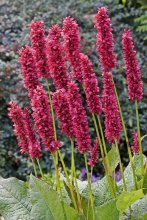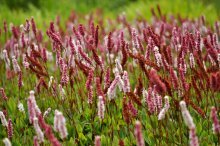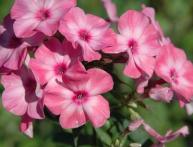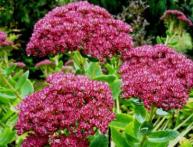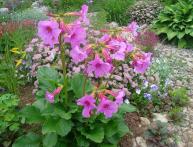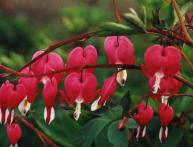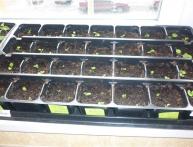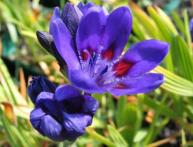Persicaria: growing features and beneficial properties

Multi-species persicaria, cultivation and proper care give the plant full development. Useful properties, wide application in folk medicine and culinary traditions highlight the genus among the diversity of other cultures.
Content:
- Description of the persicaria plant
- Features of cultivation
- Benefits and applications in folk medicine and cooking
Description of the persicaria plant
The herbaceous plant Persicaria belongs to the buckwheat family. There are up to 150 species of plants growing in the form of vines and subshrubs. Representatives of the genus belong to annual, often perennial, plants. They reach a height of 30 to 200 cm. On an erect, ascending and climbing stem there are numerous lanceolate leaves up to 30 cm long with pointed ends.
The color of green leaves varies from dark to light, with the presence of dark spots. There are a large number of small flowers in the spike-shaped, racemose and paniculate inflorescences.
Their varied color palette depends on the species. They appear by mid-May and bloom before the onset of cold weather. The fruits in appearance are small dark nuts, slightly flattened or triangular in appearance. Creeping and rod rhizomes well developed. A well-founded description of the genus can find worthy use for every plant in the world of flora.
Features of cultivation
The genus is distributed in the temperate and tropical climates of the northern regions, and also mostly grows in South America. The species tolerate sun and partial shade and easily and colorfully decorate flower beds with rich blooms from May until the first frost.
Plant propagation occurs by seeds and division of the bush. Before sowing in early spring, seeds undergo a stratification process for 1 to 2 months, at a temperature of 18 - 25°C. Transplantation by dividing the bush allows the plant to quickly adapt to new growing conditions. The roots take root easily due to rapid growth.
Plants grow in any area; they do not require fertile soil. Favorable growing conditions on fertilized and drained soil turn persicaria into an obvious aggressor, which, as it grows, displaces other competitors nearby. Quite often, plants act as weeds and grow almost everywhere. Constant weeding of such species brings considerable physical labor to gardeners.
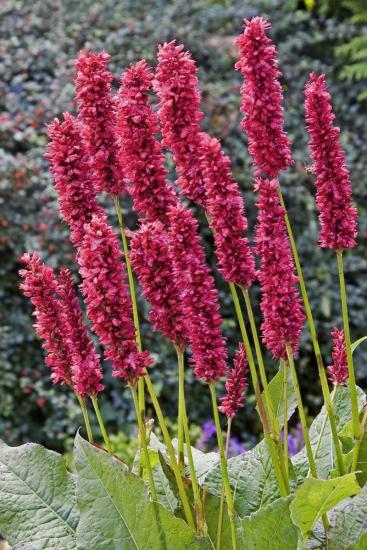
In summer, moisture-loving plants require moderate watering and periodic application of complex fertilizers up to 3 times a season. Adult persicaria are frost-resistant crops and do not require protective measures. Young plants in the first year of development need protective shelter in winter. The Japanese, filamentous and small-headed species are destined for the winter period in a greenhouse.
Plants are not susceptible to diseases and pests and are characterized by protective resistance. The presence of species diversity of persicaria shows the effective qualities of cultivation. The unpretentiousness and endurance of plants, on the one hand, at the same time shows the aggressive properties of propagation.
Benefits and applications in folk medicine and cooking
In folk medicine
The storehouse of nutritional components of persicaria copes with some diseases:
- prevents the development of heart diseases, relieves inflammation and swelling with the help of flavonoids and essential oils
- copes with the unpleasant disease – hemorrhoids, reducing hemorrhoids and inflammation, due to the presence of organic acids and tannin
- The antioxidant properties of the plant can stop uterine, gastric
- intestinal and heavy menstrual bleeding, due to the presence of vitamins K and C
- silicic acid prevents the formation of urinary stones
The healing properties of the plant have long been known to many and are used in folk medicine and pharmaceuticals.
Use in cooking
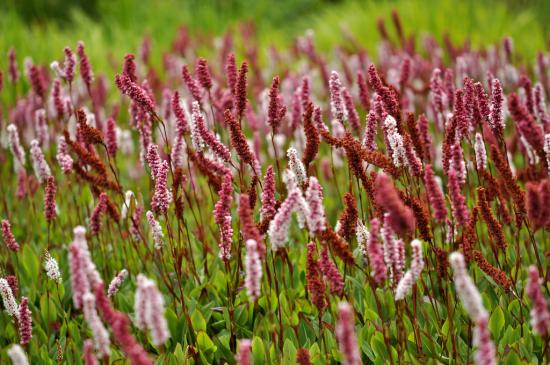
The rhizomes of the plants are used as an additive to salads of boiled vegetables. Before use, reduce the amount of starch and tannins by frying or stewing. Peeled young shoots and leaves are boiled and used in salads, like asparagus. A puree is prepared from fresh leaves of young plants with the addition of nettles, which is used as a dressing for borscht or cabbage soup.
The pungent peppery taste of the dried above-ground parts of the plant - seeds, leaves and stems - is used in ground form as a spicy seasoning for sauce, salad, and the first vegetable dish. The seasoning is also added along with herbs when canning vegetables.
Prepared tea from dried leaves is considered beneficial vitamin drink. Adding sugar or honey will help reduce the peppery taste and increase the nutritional value. The edible qualities of the plant are happily used in cooking.
In conclusion, it is worth saying that persicaria is a plant that can become a decoration for any garden plot, which fits originally into flower arrangements. The unpretentious qualities of plants can delight every gardener with annual and abundant flowering.
Video about persicaria:

